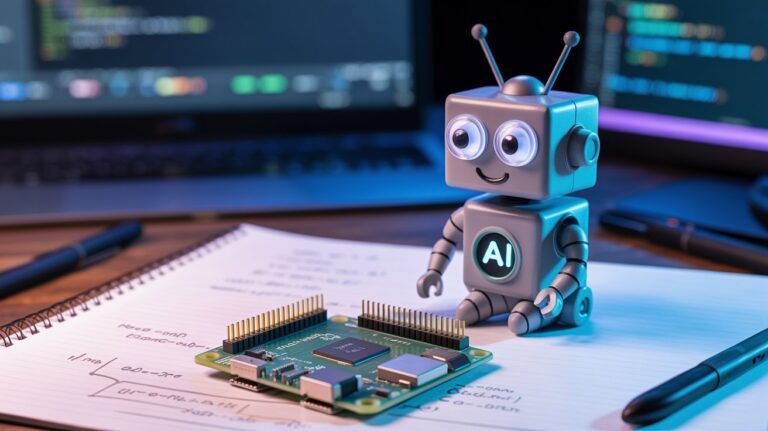
TL;DR
- Hugging Face logs $1 million in sales of its Reachy Mini robots within five days of launch.
- The company positions the desk-sized robot as a hackable, open-source AI device — not a household chore assistant.
- Co-founder Thomas Wolf sees Reachy Mini as an “empty iPhone” for robotics apps.
- Hugging Face acquired French robotics firm Pollen Robotics to accelerate development.
- The company aims to build trust and accessibility in consumer AI robotics through affordability and openness.
From Software to Hardware: Hugging Face Enters Consumer Robotics
Hugging Face, a leader in open-source AI platforms, has officially made its foray into robotics. Known for hosting models like BLOOM and providing access to thousands of machine learning tools, the company has now set its sights on desktop-friendly AI robots — and consumers are responding.
Within just five days of opening orders, Hugging Face has sold over $1 million worth of its Reachy Mini units, a compact robot designed for local, offline AI-powered interaction. The launch signals Hugging Face’s ambition to make open-source robotics approachable to developers, hobbyists, and eventually, everyday users.
The Reachy Mini: More Hackable Companion than Household Assistant
Unlike companies like Figure or 1X that are chasing full-scale humanoid helpers, Hugging Face’s Reachy Mini serves a different purpose: a friendly, programmable desk companion.
The robot features:
- Camera-enabled eyes
- Microphones and speakers
- A bobbing head
- Antennae-style ears
- Preloaded and user-developed apps
Reachy Mini runs on open-source software, enabling developers to build and deploy local AI apps — no cloud dependency required.
According to Thomas Wolf, co-founder and chief scientist at Hugging Face, the vision is clear: “Reachy Mini is a bit like an empty iPhone,” capable of running multiple apps and evolving into a multi-functional robotic platform over time.
Building an App Ecosystem for Reachy Mini
Wolf believes Reachy Mini is not just a gadget — it’s the starting point for a broader ecosystem. Hugging Face hopes to inspire a community-driven development cycle, where users can create, share, and improve robot apps in the same way they’ve contributed to AI model development.
He emphasizes:
“We want people to feel excited about having a robot on their desk, just like they were once excited about having their first PC or smartphone.”
This philosophy aligns with Hugging Face’s broader mission to democratize AI by making its tools accessible and editable by anyone.
Hugging Face’s Robotics Strategy
| Metric | Value |
| Product Name | Reachy Mini |
| Launch Date | July 2025 |
| First 5-Day Sales | $1 million |
| Primary Use | Programmable AI desktop companion |
| Core Technologies | Open-source software, local inference |
| Developer Support | Yes – customizable apps |
| Parent Company | Hugging Face |
| Robotics Acquisition | Pollen Robotics (France) |
TechCrunch, Hugging Face
The Strategic Role of Pollen Robotics Acquisition
To accelerate its hardware ambitions, Hugging Face quietly acquired Pollen Robotics — a French startup known for developing the original Reachy robot. That acquisition gave Hugging Face a strong hardware foundation and access to robotics talent already familiar with open interaction models and human-centric design.
Pollen’s emphasis on accessible pricing and friendly robot form factors has translated directly into Reachy Mini’s design. The unit is small, expressive, and designed to live comfortably on a work desk, encouraging interaction rather than automation of labor.
Affordability, Trust, and the Consumer Learning Curve
Unlike large industrial or humanoid robots priced in the tens of thousands, Reachy Mini is designed to be affordable, placing it within reach of educators, developers, and curious consumers.
Wolf points out that pricing was a strategic design goal, not an afterthought. Hugging Face wants the robot to function as an educational and trust-building entry point for broader adoption of AI in the home.
“It’s about making something you want to see on your desk every day — and can actually afford,” said Wolf during an interview on TechCrunch’s Equity podcast.
Looking Ahead: A Full-Sized Robot and Open Privacy Standards
Hugging Face’s robotics roadmap doesn’t stop at Reachy Mini. The company is exploring larger, humanoid-style platforms, though Wolf insists any future development will remain committed to privacy, open protocols, and transparent AI reasoning.
In contrast to closed-source competitors that require cloud connections, Hugging Face argues that open-source architecture will be critical for trust in consumer robotics. By allowing users to inspect code, customize behaviors, and run applications offline, Hugging Face hopes to address the growing concerns around surveillance and AI misuse in domestic environments.
Anchor Text Links and Related Topics
- Learn more about Reachy Mini’s open-source platform.
- Read about Pollen Robotics and its origins.
- Explore the concept of open-source AI in robotics.
- Listen to the Equity podcast’s episode on Hugging Face’s hardware push.






